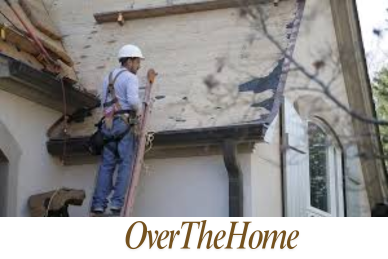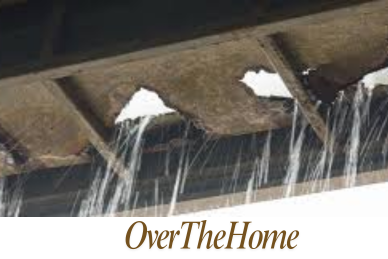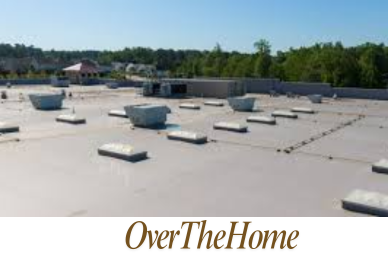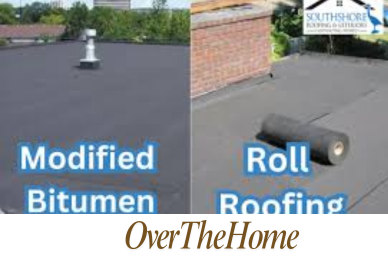How to Identify Modified Bitumen
Modified bitumen roofing is a type of asphalt membrane that has been enhanced with the addition of polymers and reinforcement materials. This makes it more durable and versatile compared to traditional asphalt roll roofing. Modified bitumen roofs are commonly used on low-slope or flat roofs due to their ability to withstand ponding water and resist cracking.
While identifying a modified bitumen roof may seem straightforward, there are certain visual cues and characteristics that can help distinguish it from other roofing materials. By understanding these key factors, you can make an informed assessment and determine if your roof is indeed modified bitumen.
Identify Modified Bitumen by Visual Inspection
Basically, there are two typical ways to identify modified bitumen on roofing. One is visual inspection, and the other one is non-visual identification. Now, we’ll talk about the visual inspection. So, let’s begin!
Seams
Look for a melted bitumen runout along the seams, which is a telltale sign of a torch-down installation method commonly used for modified bitumen roofs. On the other hand, asphalt roll roofing typically has seams sealed with plastic roof cement, creating a distinct appearance.
Thickness
Modified bitumen roofs tend to be thicker and more substantial compared to asphalt roll roofing. This increased thickness is a result of the multiple layers and reinforcement used in modified bitumen systems. A two-ply modified bitumen system with a granulated cap sheet is typically 240 mils thick or more.
Reflective Coating
While a silver or reflective coating is sometimes present on modified bitumen roofs to enhance energy efficiency, this characteristic alone is not a reliable indicator. Various roofing materials, including asphalt roll roofing, can also be coated with reflective materials.
Age
Extensive cracking and deterioration on an older roof is more likely to be associated with asphalt roll roofing, as it is less durable than modified bitumen. Conversely, minimal cracking on an aged roof might suggest the presence of a modified bitumen system, which is known for its longevity and resistance to weathering.
Hail Damage
In the event of hail damage, blisters or uplifted areas on a modified bitumen roof may appear more prominent due to the softer and more flexible nature of the material compared to asphalt roll roofing.
NOTE: While visual inspection can provide valuable clues, it’s important to note that relying solely on this method can be challenging and may not always lead to a definitive identification. Factors such as age, weathering, and maintenance can sometimes obscure the visual characteristics of modified bitumen roofs, making it difficult to distinguish them from other roofing materials.
Non-Visual Identification Methods of Modified Bitumen
Now it’s time to get to know about the non-visual identification methods. For your information, these methods are kind of tricky and require more effort. To know them in detail, keep reading!
Core Sampling
One of the most reliable ways to definitively identify a modified bitumen roof is through core sampling. This involves extracting a small cylindrical sample from the roof, allowing a professional to analyze the cross-section and layers of the roofing material.
Core sampling can reveal –
- The number of layers (modified bitumen typically has two or more layers)
- The presence of reinforcement materials (fiberglass mat, polyester fabric, etc.)
- The composition of the bitumen (modified with polymers or not)
While core sampling is an accurate method, it does create a small hole in the roof that needs to be properly repaired.
Infrared Scanning
Infrared scanning is a non-destructive technique that can provide valuable information about the roofing material. This method uses an infrared camera to detect temperature variations across the roof surface, which can indicate the presence of different materials or layers.
Experienced professionals can interpret the infrared images and identify patterns that are characteristic of modified bitumen roofs, such as the distinctive heat signature of the multiple layers.
Roof Moisture Survey
Moisture surveys, which can be conducted using techniques like nuclear moisture meters or capacitance meters, can indirectly provide clues about the roofing material. Modified bitumen roofs are known for their superior moisture resistance, so the presence of significant moisture intrusion may suggest a different roofing system.
However, it’s important to note that moisture surveys alone cannot definitively identify modified bitumen, but they can complement other assessment methods.
Testing Samples
In some cases, a roofing professional may choose to remove a small sample of the roofing material for laboratory testing. Various analytical techniques, such as Fourier-Transform Infrared Spectroscopy (FTIR) or Differential Scanning Calorimetry (DSC), can be used to analyze the chemical composition and identify the presence of polymers, confirming if the sample is modified bitumen or not.
While these non-visual methods can provide more definitive identification, they often require specialized equipment, expertise, and may involve some minor disturbance or damage to the roof. As such, they are typically employed by professional roofing contractors or consultants when a thorough assessment is necessary.
For most residential or commercial building owners, a combination of visual inspection and consultation with a qualified roofing professional may be the most practical approach for identifying a modified bitumen roof initially. If further confirmation is needed, these non-visual methods can be considered as additional steps in the evaluation process.
Is Modified Bitumen Roofing Good?
Modified bitumen roofing is generally considered a good roofing option, especially for low-slope or flat roofs. Here are some of its key advantages –
Durability: The addition of polymers and reinforcement materials makes modified bitumen roofs highly durable and resistant to weathering, UV exposure, and thermal shock.
Flexibility: The flexible nature of modified bitumen allows it to better accommodate building movement and thermal expansion/contraction, reducing the risk of cracking or splitting.
Longevity: With proper installation and maintenance, modified bitumen roofs can last up to 20-30 years, providing a longer lifespan compared to many other roofing materials.
Water Resistance: The multi-layer design and seamless installation make modified bitumen roofs highly resistant to water ponding and leaks.
However, there are also some potential drawbacks to consider. Those are –
Installation Complexity: Proper installation of modified bitumen roofs requires specialized equipment and expertise, which can increase labor costs.
Environmental Concerns: The torch-down installation method can pose fire risks and release emissions, leading some regions to restrict or ban its use.
Repair Challenges: Repairing or patching modified bitumen roofs can be more challenging compared to other roofing systems, often requiring specialized materials and techniques.
Overall, modified bitumen roofing is a highly regarded option for low-slope and flat roofs, offering excellent durability, flexibility, and longevity when installed correctly by experienced professionals. However, it’s essential to weigh the pros and cons, consider regional regulations, and carefully evaluate your specific project requirements before making a final decision.
End Note
Spotting a modified bitumen roof can be tricky, especially for someone new to roofing. While this guide equips you with visual cues like seams, thickness, and how the material reacts to damage, getting a professional opinion is always best. Knowing your roof’s material is key to making informed choices about maintenance, repairs, or replacements, and avoiding costly mistakes. If you’re unsure after reading this, feel free to leave a comment below – I’m happy to help! Remember, a little effort in understanding your roof now can save you a lot in the long run.






